Two blog posts ago I started a blog mini series reviewing the six seasons of Star Wars The Clone Wars – The Animated Series (TAS). In the first post I reviewed Seasons 1 and 2, recommending the series to you all with great enthusiasm (which to this day is still as great!). In the blog post that followed I decided to zoom in on Anakin Skywalker for the remaining four seasons of TAS, starting with Season 3.
Before moving on to Season 4 I’d like to linger with the third season a little longer, focussing exclusively on three episodes which together form the Mortis story arc. The rest of Season 3 consists of many adventures that are very entertaining and very Star Wars, but the Mortis story line is one of the key episodes not only of the series, but of the entire SW franchise as a whole. It establishes Anakin as the Chosen One, and it really swept me off of my feet.
This time I’ll give an extensive synopsis, which will not be objective at all by the way 😉 (other opinions are available…)
Season 3: Essential Force Mythology
Buried in the middle of the third season, the three-episode Mortis arc is a rare gem of Force mythology, stemming from George Lucas’s original ideas of what the Star Wars concept should be. Interesting? You bet! And exciting, thrilling, awesome! In fact, these are the only episodes I rewatched soon after I watched them the first time. Before you read on I have to warn you though, this blog post contains spoilers for the entire story arc, so please watch the episodes first if you don’t want to be spoiled…
Story
In S03E15 (Overlords) the Jedi Council receives a transmission from far beyond the Outer Rim. Why and from where it was sent cannot be established, but hidden in the message is a Jedi distress code that hasn’t been used in over 2000 years, so the Council sends Obi Wan, Anakin and Ahsoka to investigate.
As it turns out, three very powerful entities living in what seems to be some kind of extra-dimensional world have sent the signal to lure Anakin to them. They present themselves as humanoid beings, an elderly father and his grown son and daughter, and they’re simply called Father, Son and Daughter. The three call themselves guardians of the power, and they cannot leave their world, which turns out to be a conduit through which the entire Force flows. Daughter is aligned with the Light side, Son with the Dark side, and Father rules them both.
 They are all keen to know whether Anakin is The Chosen One. Which would be more than simply Jedi or Sith, but to be a so-called Force Wielder like Father and his children. And on top of that, to be the One who controls and balances the Light and the Dark sides of the Force by controlling the son and daughter.
They are all keen to know whether Anakin is The Chosen One. Which would be more than simply Jedi or Sith, but to be a so-called Force Wielder like Father and his children. And on top of that, to be the One who controls and balances the Light and the Dark sides of the Force by controlling the son and daughter.
In the night all three of the Jedi are having visions, which though not crucial to the story, ring very true for at least the movie universe and probably future seasons of the animated series: Obi Wan seems to meet his old master Qui Gon, who asks if Obi Wan has trained Anakin well (a loaded question, considering what happens in the movies…). Anakin sees his long-dead mother, to whom he confides his greatest pain and fear: his guilt over loosing her and his fear of loosing the ones he loves, like Padme. Also very prophetic in light of the events in the movies…
Ahsoka meets her older self, who warns her of the seeds of the Dark Side that are planted within her by Anakin. She also warns her to leave the planet and Anakin, or she may never see her future. So maybe this shows us what might happen to Ahsoka: perhaps she won’t die, perhaps she won’t turn to the Dark Side – maybe she’ll simply leave Anakin and the Jedi (to grow up and live happily ever after…?).
 Future Ahsoka
Future Ahsoka
Balancing the Force – The Chosen One
Father wants to test Anakin to see if he is indeed the Chosen One and has Ahsoka and Obi Wan taken by his children, who have now taken the forms of huge and violent flying creatures: a gargoyle and a griffin.
 They take them back to the temple-palace of the Father, landing in a Yin-Yang(ish) shaped arena. Father threatens to have them kill Anakin’s friends, challenging Anakin to choose and save either his master or his apprentice, while loosing the other. Father claims that making such a choice will help Anakin get free of his guilt over the death of his mother.
They take them back to the temple-palace of the Father, landing in a Yin-Yang(ish) shaped arena. Father threatens to have them kill Anakin’s friends, challenging Anakin to choose and save either his master or his apprentice, while loosing the other. Father claims that making such a choice will help Anakin get free of his guilt over the death of his mother.
A very strange piece of advise in my opinion, for I cannot see how one could conquer his guilt by committing the same type of action that caused the guilt to begin with; in this case: having someone you love die while feeling responsible for their safety.
Of course Anakin refuses to choose (good for him!), uses the Force-amplifying properties of the planet and brings both creatures to heel, rescuing both of his friends in an absolutely awe-inspiring display of Force Wielding. (At this point I was positively thrilled and at the edge of my seat!)

 Father is satisfied that Anakin is the One, for only the Chosen One could tame both of his children.
Father is satisfied that Anakin is the One, for only the Chosen One could tame both of his children.
So apparently Father lied when telling Anakin that choosing would help him with conquering his guilt?! And here’s another thing, Daughter is supposed to embody everything the Light Side of the Force is: selflessness, life, forgiveness, etc. And yet she blindly obeys Father’s command to kidnap and (try to) kill Obi Wan?? That seems very inconsistent with her character.
Anyway, Father wants Anakin to stay on the planet and be his successor, as he is dying. He tells Anakin that he has to choose this voluntarily, but warns him that if he makes a different choice and leaves, his selfishness will haunt both him and the galaxy.
The rest is history, it seems, for Anakin chooses to leave the planet with his friends…
Premonitions
The story continues however and in the next episode (Altar of Mortis), they return to the planet, since Son takes Ahsoka before they’ve gotten very far. How is not clear, and personally I think this is a plot hole since during the rest of the story arc Son needs a space ship to leave the planet. So how can he get to Ahsoka in her ship (flying through space), when he’s still on the planet…?
Anyway, during the events that follow, the balance of the Force is actually broken, as Son injures Father and kills Daughter, his sister. Father warns that since his son has now descended deeply into the Dark Side, much more power will flow to the Sith and war will increase throughout the universe. Which is why he tells Anakin to quickly leave the planet with his friends, before Son can take the ship to leave the planet himself.
In Ghosts of Mortis, the last episode of this story arc, Ahsoka is busy fixing their ship, since they crash-landed it in the previous episode. (I’m sorry, but when was Ahsoka trained as a high-tech space craft engineer?!). Meanwhile, Anakin decides to visit the Father one more time to get his blessing to leave, otherwise he says it would haunt him for the rest of his life.
A striking difference with the first episode of this arc, where Father warns Anakin not to leave (or else…) and Anakin leaves anyway!
Father however simply repeats Anakin should leave before Son can take the ship and wreak havoc throughout the universe. He wants his son to remain on the planet so he can kill him.
Again, very strange. Aren’t his children supposed to balance the Force? How then, can Father even consider killing one of them?!
Anakin wants to help, but Father guides him to the Well of the Dark Side to find a third way for handling this situation, instead of either leaving or staying behind to kill Son. And again, I find this a rather curious advise of this supposed ‘wise one’, to send someone not to the Well of Good, but to the Well of Evil to find some wisdom, guidance and direction!
The Well of the Dark Side looks suitably ‘hellish’ of course, or at least how Hell is depicted most of the time: lots of lava lakes, fire and brimstone, and a devilish Son waiting for Anakin. The son breaks the laws of time and shows Anakin his future, while threateningly bellowing “Know yourself, know what you will become!”
OMG – another thrilling and exciting moment, for despite Anakin’s resistance against the vision he is overwhelmed by it and we see several glimpses of situations we know from the movies! I won’t spoil them but they are well-known situations where Anakin either is, or is becoming, Darth Vader! So cool! What’s more, in the end we even see a quickly dissipating vision of Darth Vader looming over Anakin, and however fleeting that moment is, it is absolutely awesome and a very satisfying climax to the scene!
 Again Son shows his sly powers of seduction, for he now offers Anakin to avoid this horrible future by the side of the Sith Emperor, namely by Anakin joining Son and destroying the rising empire of the Sith together. Very well-played 🙂 , for Anakin, desperate to save the galaxy, his loved ones and himself, sees no other way and actually joins Son! His eyes immediately change, with dark circles underneath and sometimes even yellowish irisses, a clear foreboding of his ultimate downfall in the third movie.
Again Son shows his sly powers of seduction, for he now offers Anakin to avoid this horrible future by the side of the Sith Emperor, namely by Anakin joining Son and destroying the rising empire of the Sith together. Very well-played 🙂 , for Anakin, desperate to save the galaxy, his loved ones and himself, sees no other way and actually joins Son! His eyes immediately change, with dark circles underneath and sometimes even yellowish irisses, a clear foreboding of his ultimate downfall in the third movie.
Path of Death and Destruction
Just when all seems (somewhat prematurely) lost, Father intervenes and makes Anakin forget the whole thing, rendering him unconscious, saying: “Nothing is set in stone. If there is to be balance, what you have seen must be forgotten.”
Contrary to Father’s initial advise he now wishes Anakin to be the one to kill Son! Very inconsistent of course, but hey, by now we’re all used to that.
Anakin shows himself to be a cold-blooded killer once again, for he simply strikes the Son down at the command of Father, without any hesitation.
Well, to cut a long, long story at least a little short, in the end all three guardians of the Force die. And Ahsoka too – though thanks to Daughter’s dying breath not permanently.
Father’s last words are for Anakin, urging him to stay on this path “for he has brought balance to this world, and will do it again for the Galaxy.” Yet again, a very curious remark of a so-called wise character, for in this case restoring the balance meant destroying three living, breathing entities! Of course we know that his words are darkly prophetic, since Anakin will do a lot of destroying and killing before he finally brings balance to the Force in the galaxy. But that still makes the advise to stay on this path very strange at best.
What a ride
In spite of all inconsistencies, plot holes and a generally flawed plot, this story arc was such a blast! Lots of action, thrilling moments, many visions and dreams and of course a deeper look into the Force and the legends and myths surrounding it. And what stunning insights into Anakin, his way of thinking, his intentions and his character journey!
As for the mythology of the Star Wars universe, of course we already know that the Force is not a biblical concept. In this story arc it was very abundantly made clear that if there has been any religion or philosophy that influenced George Lucas when creating this universe, it most definitely was not biblical christianity. If anything, in Star Wars can be found some buddhistic, gnostic and new age influences. And those are the obvious ones, who knows what we would find if we really start digging into it. 😉 All of which does not have to be a problem for Christians however, as long as they’re consciously aware of those influences and are careful not to be tempted by them.
 A Yin Yangish arena
A Yin Yangish arena
One of the rare statements that are actually in line with the bible by the way, curiously comes from one of the least biblical characters of the story arc: Father. For when Father states, in his final words to Anakin: “Beware your heart,” this echos – probably wholly and utterly unwittingly – the book of Proverbs in the bible, where it says:
‘Above everything else, guard your heart; for from it flow the springs of life.’ (Proverbs 4:23).
The bible also tells us our hearts are “deceitful above all things, and desperately wicked” (Jeremiah 17:9).
To be continued?
Although the rest of Season 3 never refers back to the Mortis story arc again (how strange!), I cannot wait to see what Seasons 4-5-6 will bring, for there are enough loose ends left open in this story arc to revisit at least some of its plot line.
For instance, nothing ever really dies, according to the three guardians of the Force. So does that mean we’ll see one or all of them again…? Or (one last spoiler ahead!) will Daughter simply be seen in the traces she left in Ahsoka when Father and Anakin revived Ahsoka with Daughter’s last remnant of Life force? Who knows, let’s just find out shall we… 🙂






















 While Daegon en Xesh plan their escape from Bogan to get the materials for new force sabers, the Je’daii study an ancient holocron to try to find out more about the threat that is coming, the threat Daegon Lok saw in his force visions years ago, that they say drove him mad and made them banish him to Bogan. What’s interesting about this holocron, is that it looks like a mini replica of a Tho Yor, the huge ancient force ships that brought all force users to Tython – about which we learned in part 1 of the trilogy.
While Daegon en Xesh plan their escape from Bogan to get the materials for new force sabers, the Je’daii study an ancient holocron to try to find out more about the threat that is coming, the threat Daegon Lok saw in his force visions years ago, that they say drove him mad and made them banish him to Bogan. What’s interesting about this holocron, is that it looks like a mini replica of a Tho Yor, the huge ancient force ships that brought all force users to Tython – about which we learned in part 1 of the trilogy.











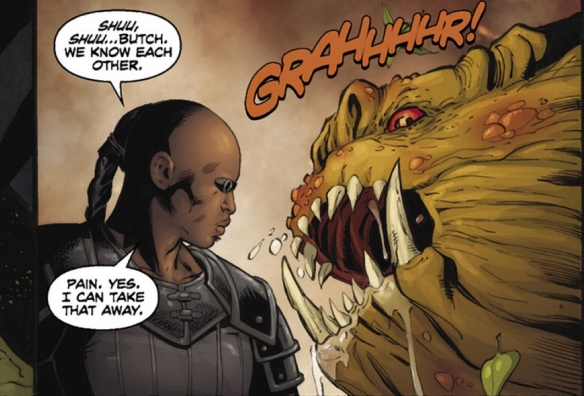







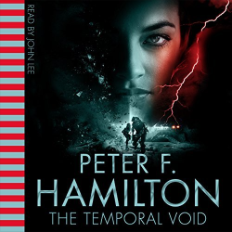 This was my fifth very lengthy title by Peter F. Hamilton, all of which in the same universe, and I have to say, this is the best one so far! And the rest got 4 stars from me as well, mind you. I don’t know if I finally acquired the taste needed to fully appreciate these stories, or if this one was actually really better than the previous ones. Whatever the case may be, I was engrossed. Again.
This was my fifth very lengthy title by Peter F. Hamilton, all of which in the same universe, and I have to say, this is the best one so far! And the rest got 4 stars from me as well, mind you. I don’t know if I finally acquired the taste needed to fully appreciate these stories, or if this one was actually really better than the previous ones. Whatever the case may be, I was engrossed. Again.
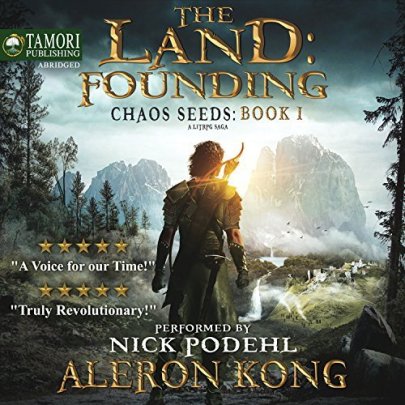




 After having finished Peter F. Hamilton’s two-part
After having finished Peter F. Hamilton’s two-part 
 The Jedi want him to stay out of the murder investigation precisely for this reason, but (of course) Chancellor Palpatine encourages him to do it anyway. This sends him on a murderous hunt, using his Force Grip openly to squeeze information out of people – in stark contrast to
The Jedi want him to stay out of the murder investigation precisely for this reason, but (of course) Chancellor Palpatine encourages him to do it anyway. This sends him on a murderous hunt, using his Force Grip openly to squeeze information out of people – in stark contrast to 












 In my fourth
In my fourth 

 Rule of Two is the second part of the Star Wars:
Rule of Two is the second part of the Star Wars: 
 This, my second
This, my second 
 Hey all! It’s taken me a while to get back here, what can I say, life is busy and often beautiful 🙂 But, here I am and with a new habit of geeky content consumption: audiobooks. Audiobooks are the ideal way to combine reading a novel while doing other stuff (like living life, busy and beautiful) and ever since I discovered the sheer endless well of narrated titles I dove in and started swimming.
Hey all! It’s taken me a while to get back here, what can I say, life is busy and often beautiful 🙂 But, here I am and with a new habit of geeky content consumption: audiobooks. Audiobooks are the ideal way to combine reading a novel while doing other stuff (like living life, busy and beautiful) and ever since I discovered the sheer endless well of narrated titles I dove in and started swimming.


 They are all keen to know whether Anakin is The Chosen One. Which would be more than simply Jedi or Sith, but to be a so-called Force Wielder like Father and his children. And on top of that, to be the One who controls and balances the Light and the Dark sides of the Force by controlling the son and daughter.
They are all keen to know whether Anakin is The Chosen One. Which would be more than simply Jedi or Sith, but to be a so-called Force Wielder like Father and his children. And on top of that, to be the One who controls and balances the Light and the Dark sides of the Force by controlling the son and daughter.
 They take them back to the temple-palace of the Father, landing in a Yin-Yang(ish) shaped arena. Father threatens to have them kill Anakin’s friends, challenging Anakin to choose and save either his master or his apprentice, while loosing the other. Father claims that making such a choice will help Anakin get free of his guilt over the death of his mother.
They take them back to the temple-palace of the Father, landing in a Yin-Yang(ish) shaped arena. Father threatens to have them kill Anakin’s friends, challenging Anakin to choose and save either his master or his apprentice, while loosing the other. Father claims that making such a choice will help Anakin get free of his guilt over the death of his mother.
 Father is satisfied that Anakin is the One, for only the Chosen One could tame both of his children.
Father is satisfied that Anakin is the One, for only the Chosen One could tame both of his children. Again Son shows his sly powers of seduction, for he now offers Anakin to avoid this horrible future by the side of the Sith Emperor, namely by Anakin joining Son and destroying the rising empire of the Sith together. Very well-played 🙂 , for Anakin, desperate to save the galaxy, his loved ones and himself, sees no other way and actually joins Son! His eyes immediately change, with dark circles underneath and sometimes even yellowish irisses, a clear foreboding of his ultimate downfall in the third movie.
Again Son shows his sly powers of seduction, for he now offers Anakin to avoid this horrible future by the side of the Sith Emperor, namely by Anakin joining Son and destroying the rising empire of the Sith together. Very well-played 🙂 , for Anakin, desperate to save the galaxy, his loved ones and himself, sees no other way and actually joins Son! His eyes immediately change, with dark circles underneath and sometimes even yellowish irisses, a clear foreboding of his ultimate downfall in the third movie.

 Anakin near-fatally injured: definitely not invulnerable
Anakin near-fatally injured: definitely not invulnerable Another example of the Jedi way of putting the collective before the individual can be found In episode 13. Ahsoka is told by Jedi master Aayla Secura to leave a seriously injured Anakin behind and go with her and the troopers to find a way off of the planet they stranded on. Ahsoka doesn’t want to leave Anakin behind, claiming he would never leave her behind if she were ever in the same position. But Secura tells her: ‘As a Jedi it is your duty to do what’s best for the group.’
Another example of the Jedi way of putting the collective before the individual can be found In episode 13. Ahsoka is told by Jedi master Aayla Secura to leave a seriously injured Anakin behind and go with her and the troopers to find a way off of the planet they stranded on. Ahsoka doesn’t want to leave Anakin behind, claiming he would never leave her behind if she were ever in the same position. But Secura tells her: ‘As a Jedi it is your duty to do what’s best for the group.’ I really love how the character of Anakin is written here. It shows him to be a strong, fearless and remarkably gentle leader. He is fatherly and brotherly at the same time. This is the kind of leadership that makes people flourish, the kind that makes me want to be a leader just like that.
I really love how the character of Anakin is written here. It shows him to be a strong, fearless and remarkably gentle leader. He is fatherly and brotherly at the same time. This is the kind of leadership that makes people flourish, the kind that makes me want to be a leader just like that.
 Clone Wars animated series: Approaching Naboo Palace
Clone Wars animated series: Approaching Naboo Palace Clones
Clones On a side note, an interesting point is raised here: are clones truly human, true individuals and do they therefore, have their own souls? In S01E01 Yoda goes out of his way to stress that they are unique individuals, and in episode 2 Jedi master Plo Koon constantly encourages his troopers to embrace their individual intrinsic value. But that is for another blog post to explore…
On a side note, an interesting point is raised here: are clones truly human, true individuals and do they therefore, have their own souls? In S01E01 Yoda goes out of his way to stress that they are unique individuals, and in episode 2 Jedi master Plo Koon constantly encourages his troopers to embrace their individual intrinsic value. But that is for another blog post to explore… I feel that in season 1 at least we see the positive aspects of those characteristics of Ahsoka – in contrast to some of Anakin’s more negative tendancies.
I feel that in season 1 at least we see the positive aspects of those characteristics of Ahsoka – in contrast to some of Anakin’s more negative tendancies.

 Dislikes
Dislikes

 You should be warned though, this comic can be very explicit and has a 17+ only rating. Please take that seriously and do not leave it lying around where your young children can find it. (Also: don’t read it in the subway or your doctor’s waiting room…) For instance, there are some sexual scenes, there’s some graphic violence and horror elements, an F-bomb here and there, and now and again we witness intimate experiences like giving birth. Or losing a limb. (Which of the two is the scariest I leave entirely up to the reader to decide…)
You should be warned though, this comic can be very explicit and has a 17+ only rating. Please take that seriously and do not leave it lying around where your young children can find it. (Also: don’t read it in the subway or your doctor’s waiting room…) For instance, there are some sexual scenes, there’s some graphic violence and horror elements, an F-bomb here and there, and now and again we witness intimate experiences like giving birth. Or losing a limb. (Which of the two is the scariest I leave entirely up to the reader to decide…)
 Fascinatingly strange alien royalty
Fascinatingly strange alien royalty Two aliens having a very human conversation
Two aliens having a very human conversation

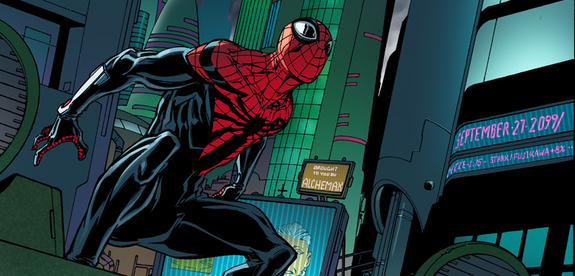






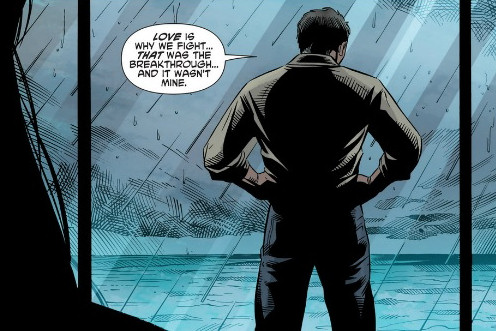
 Still, every piece of background information is woven into a a real story, making it a true graphic novel, instead of, say, a compendium.
Still, every piece of background information is woven into a a real story, making it a true graphic novel, instead of, say, a compendium.
 A couple of days ago, on Saturday February 15th, my mother and I buried my father. I had arranged for a service full of hope and praise for our God. I spoke for a couple of minutes myself, and showed a scene from Avatar. Jake’s first flight was my father’s favorite scene from his favorite movie. We had watched it together (for the umptieth time), just him and me, on New Year’s Day; my father was in a lot of pain then and I put this film on to distract and comfort him, for I knew how deeply it moved him every time he watched it.
A couple of days ago, on Saturday February 15th, my mother and I buried my father. I had arranged for a service full of hope and praise for our God. I spoke for a couple of minutes myself, and showed a scene from Avatar. Jake’s first flight was my father’s favorite scene from his favorite movie. We had watched it together (for the umptieth time), just him and me, on New Year’s Day; my father was in a lot of pain then and I put this film on to distract and comfort him, for I knew how deeply it moved him every time he watched it. The beauty of a stalk of wheat is in its details: the little hairs on the ear are reaching upwards, as if every stalk is standing in the field with its hands raised, praising its Creator as it were. 😉
The beauty of a stalk of wheat is in its details: the little hairs on the ear are reaching upwards, as if every stalk is standing in the field with its hands raised, praising its Creator as it were. 😉








 Touching? This is just the set up. The panels following it really tugged my heart strings…
Touching? This is just the set up. The panels following it really tugged my heart strings…
 Superman Earth One, Vol. 2 – cover by Shane Davis
Superman Earth One, Vol. 2 – cover by Shane Davis The bookmark bar is a nice place to keep those faves handy
The bookmark bar is a nice place to keep those faves handy By the way, here’s a video of the artist at work, click
By the way, here’s a video of the artist at work, click 
 My iPhone 4’s skin – with a customized wallpaper to match
My iPhone 4’s skin – with a customized wallpaper to match iPod Nano – Green Lantern New Guardians. You’ll notice that I’ve used scenes with a lot of pink, since my cute little Nano is pink as well! 🙂
iPod Nano – Green Lantern New Guardians. You’ll notice that I’ve used scenes with a lot of pink, since my cute little Nano is pink as well! 🙂 Green Lantern Hal Jordan visits Odym, the Blue Lantern home world. I just love those colors on my iPad!
Green Lantern Hal Jordan visits Odym, the Blue Lantern home world. I just love those colors on my iPad!

 Sticker sheet with my iPad’s second skin – when I got tired of the first one… (scene is from Grimm Fairy Tales’s Escape from Wonderland)
Sticker sheet with my iPad’s second skin – when I got tired of the first one… (scene is from Grimm Fairy Tales’s Escape from Wonderland)

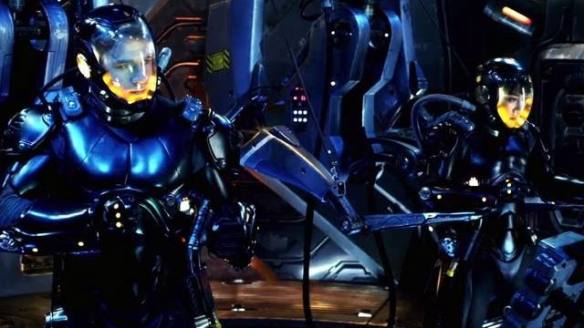
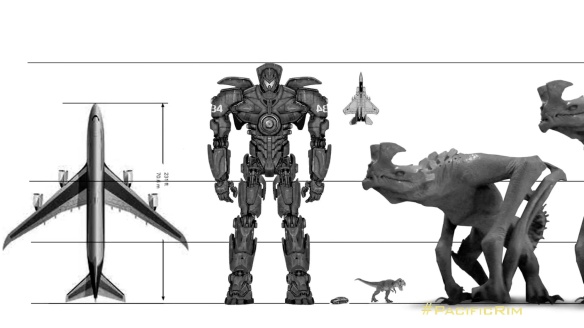 “…both would be a very modest 25 stories high…” Guillermo del Toro on the stature of both Kaiju and Jaegers, during his BBC
“…both would be a very modest 25 stories high…” Guillermo del Toro on the stature of both Kaiju and Jaegers, during his BBC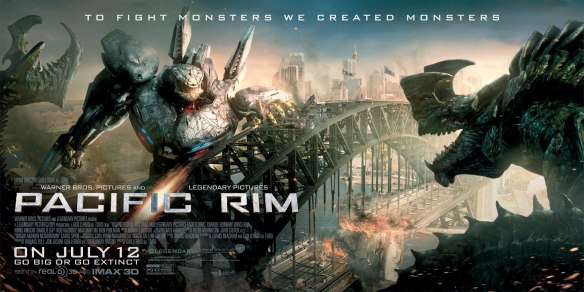




 Although I love a good comics event once in a while, I’ve found that it’s not always easy to dive into them simply by reading the first issue and then keeping up with all tie-ins by sticking to their order of publishing. First of all because many times multiple tie-in issues are published on the same day so you would have to figure out at least their reading order, and second, because the storylines within the different tie-ins aren’t always published in chronological order, or in any kind of logical order.
Although I love a good comics event once in a while, I’ve found that it’s not always easy to dive into them simply by reading the first issue and then keeping up with all tie-ins by sticking to their order of publishing. First of all because many times multiple tie-in issues are published on the same day so you would have to figure out at least their reading order, and second, because the storylines within the different tie-ins aren’t always published in chronological order, or in any kind of logical order.








 Is it a bird, is it a plane…?! No, it’s…… Hermes…?
Is it a bird, is it a plane…?! No, it’s…… Hermes…? Hera and her rebellious daughter cross verbal swords
Hera and her rebellious daughter cross verbal swords





